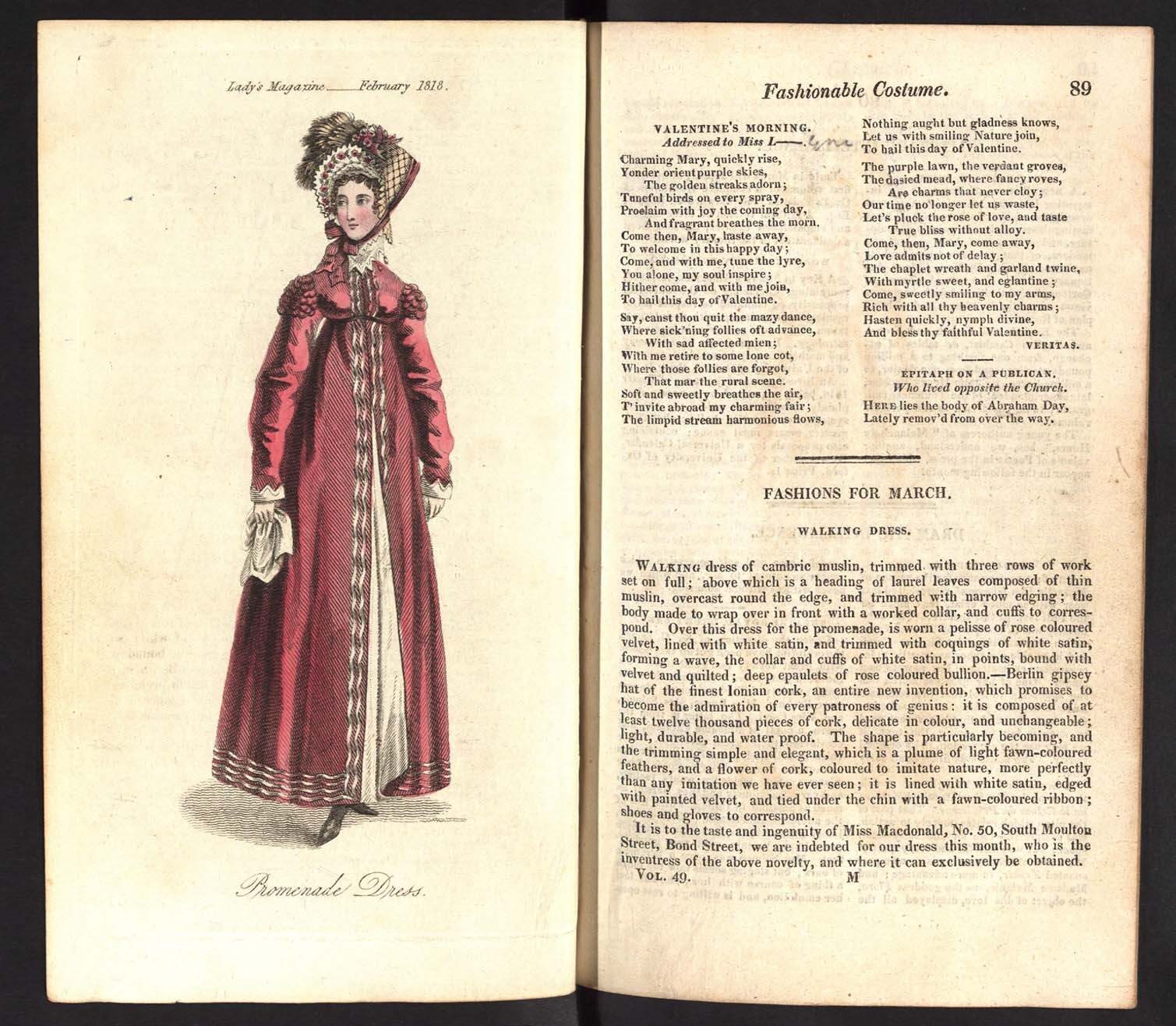The Lady’s Magazine: A Special Guest Blog by Jennie Batchelor
This blog post has been written by guest blogger Jennie Batchelor. Jennie Batchelor is Professor of Eighteenth-Century Studies at the University of Kent.
I started working on The Lady’s Magazine: or Entertaining Companion for the Fair Sex (1770-1832) in the last century. 1999 wasn’t really all that long ago, I suppose, but sometimes I feel as if I have been working on the magazine forever. I say this with no sense of tedium. For I have been happily immersed in the embarrassment of generic riches the Lady’s Magazine presented to its loyal following of thousands of readers every month.
When I began working on the periodical, I was completing a PhD on literary representations of dress. Whatever the Lady’s Magazine had to say on the matter was to take up part of one of my planned five chapters. I estimated it would take a month to trawl through the indexes in each bound volume of the magazine to 1800 (when my project concluded) and account for all the necessary articles in a couple of thousand words. Needless to say, I underestimated the task. The problem, in large part, was that I had, in fact, overestimated the magazine’s indexers, whose practices were variable, to put it politely. Dress was everywhere in the magazine. It wasn’t just the subject of the dozens of articles ‘On Dress’, but in travel writing, essays on conduct and morality and buried in hundreds of pieces on women’s education, on politics and war.
To ensure I didn’t miss anything, I skimmed everything. In those days I was reading the magazine via AM’s microfilm Women Advising Women. Skimming meant endlessly scrolling in a dark room in the British Library, giving myself a distinct feeling of seasickness whenever I sped up my searches. The technology – invaluable at the time – was dating before my eyes. I looked forward to the day when data-mining (although I didn’t know to call it that then) would be possible in the form of full-text searches of digitally reproduced texts.

'Fashions for March', from the February 1818 issue of The Lady's Magazine. Image © British Library. Further reproduction prohibited without permission.
Fast forward to late 2010 and I was on research leave about to begin a new project I had cold feet about. I kept procrastinating and did more work than was necessary for an unrelated article I’d been asked to write on the Lady’s Magazine, which invited me to think about the magazine as a whole. At last, I could give in to the urge to linger over the trial reports, the Gothic serial fiction, oriental tales and accounts of global events without the mild guilt I felt when doing my PhD, for which they weren’t strictly relevant. If only the Lady’s Magazine could be my new research project, I mused. But life was such that travelling to all the libraries I would need to, for as long as I would need to, was impossible. If only the magazine were digitized, I thought. If only AM might consider digitising it… Emboldened by more cups of coffee than is reasonable, I sent a late night email to AM’s editors. By 2012, a run on the Lady’s Magazine appeared as part of Eighteenth Century Journals, Module V: The Lady's Magazine and other titles.
Digitising the Lady’s Magazine has completely changed how it is possible to think and write about the periodical. On the back of the digitisation, I, along with my University of Kent colleagues Dr Koenraad Claes and Dr Jenny DiPlacidi, have been working on a two-year Leverhulme grant to provide a fully annotated index of the more than 140,000 items in the magazine’s first run (to 1818). Our index includes information on authors, sources for the magazine’s non-original content, as well genre descriptors and keywords for every text-based item from this period. This work seeks to make up for those pesky original indexers.
When used alongside AM’s digitisation, we hope that our index will make the Lady’s Magazine accessible to a new generation of readers who can use it to hone in on items or genres of particular interest to them. It will also enable us all to more closely identify the important place the magazine, its readers and authors, occupied in Romantic print culture, how it rose and shaped literary trends and engaged in cultural and political debate.
New media is helping us better to understand the new media of old. As a consequence, I feel my own work on the magazine is only just beginning. And I couldn’t be happier!
Eighteenth Century Journals, Module V: The Lady's Magazine and other titles includes decades of data from the index produced for the Leverhulme Project described above. The full data set is available for download from the project website here.
For more information on Eighteenth Century Journals, including free trial access and price enquiries, please email us at info@amdigital.co.uk.
Recent posts

The blog highlights American Committee on Africa, module II's rich documentation of anti-apartheid activism, focusing on the National Peace Accord, global solidarity, and student-led divestment campaigns. It explores the pivotal role of universities, protests, and public education in pressuring institutions to divest from apartheid, shaping global attitudes toward social justice and reform.

This blog examines how primary sources can be used to trace the impact of young voices on society, particularly during pivotal voting reforms in the UK and the US. Explore materials that reveal insights into youth activism, intergenerational gaps, and societal perceptions, highlighting their interdisciplinary value for studying youth culture, activism, and girlhood across history.
